▼ India is third largest beef exporter: OECD-FAO report [07-31-17]
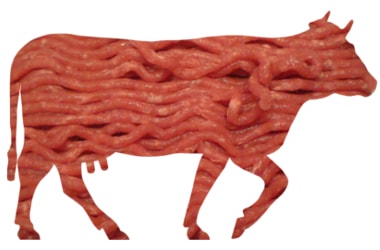 According to the OECD-FAO Agricultural Outlook 2017-2026 report, India is the world’s third-biggest exporter of beef. According to the OECD-FAO Agricultural Outlook 2017-2026 report, India is the world’s third-biggest exporter of beef.
Brazil was ranked as the world’s top beef exporter followed by Australia.
The report was released jointly by the Food and Agriculture Organisation (FAO) and the Organisation for Economic Cooperation (OECD).
India exported 1.56 million tonnes of beef in 2016. It is expected to maintain its position as the third-largest beef exporter, accounting for 16% of global exports in 2026 by exporting 1.93 tonnes that year.
India imported 363,000 tonnes of beef in 2016 and the amount was projected to stay the same over the decade.
The type of beef exported was not specified, but the exported meat appears to be mostly from buffaloes as the report has specified the animal for imports by Myanmar from India.
It needs to be clarified whether the report classifies even buffalo meat as beef.
The total world beef exports was 10.95 million tonnes in 2016 and it is expected to increase to 12.43 million tonnes by 2026.
Till 2015, India was the world’s largest exporter of beef and had extended its lead over the next highest exporter, Brazil.
OECD: Know More
- Headquarters : Paris, France
- Secretary-General : José Ángel Gurría(2017)
- Abbreviation : OECD; OCDE
- Official languages : English; French
|
▼ Strategic port Hambantota under Chinese control [07-31-17]
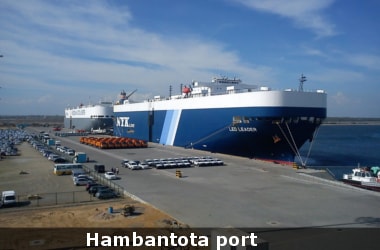 Sri Lanka has signed a US $1.1 billion deal to sell a 70% stake of the strategic Hambantota deep-sea port to China. Sri Lanka has signed a US $1.1 billion deal to sell a 70% stake of the strategic Hambantota deep-sea port to China.
Hambantota port is a deep-water port in the southern tip of Sri Lanka. It sits close to busy east-west shipping lanes connecting Europe and Asia.
The deal was signed between Sri Lanka Ports Authority (SLPA) and China Merchants Port Holding Co. (CMPort).
Under the 99-year lease agreement, CMPort will invest up to US $1.1 billion in the port and marine-related activities.
CMPort will be only responsible for commercial operations, while the SLPA will handle port’s operations, security and services.
Expanding the network of Chinese military and commercial facilities and relationships along its sea lines of communication extending from the Chinese mainland to Port Sudan, this has raised India's apprehensions.
These sea lines run through several major maritime choke points such as the Strait of Mandeb, Strait of Hormuz, Strait of Malacca and the Lombok Strait.
This also includes strategic maritime centres in Pakistan, Maldives, Sri Lanka, Bangladesh, and Somalia.
|
▼ Three spices come under CAC codex ambit [07-27-17]
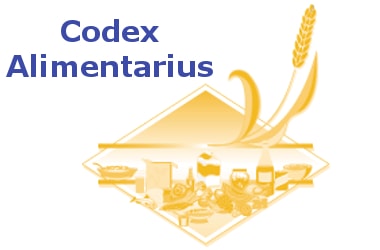 In a major recognition of India’s efforts to benchmark global spices trade, the Codex Alimentarius Commission (CAC) has adopted three Codex standards for black, white and green pepper, cumin and thyme. In a major recognition of India’s efforts to benchmark global spices trade, the Codex Alimentarius Commission (CAC) has adopted three Codex standards for black, white and green pepper, cumin and thyme.
This is paving the way for universal agreement on identifying quality spices in various countries.
The member-countries of CAC, the international food standards-setting body which met in Geneva for its 40th session during July 17-22, unanimously approved the adoption of Codex standards for the three spices.
This would facilitate evolving a common standardization process for their global trade and availability.
The Codex standards were adopted in the wake of India conducting three sessions of Codex Committee on Spices and Culinary Herbs (CCSCH) at Kochi (2014), Goa (2015) and Chennai (2017).
The Chennai session succeeded in achieving this consensus.
Subsequently, these drafts were placed before the CAC, and it was adopted by consensus with an overwhelming support from the member-countries.
With the adoption of the Codex standards on pepper, cumin and thyme, spices have been included for the first time as commodities that will have such universal standards.
The adoption of the Codex standards would imply that there are now reference points and benchmarks for the member-countries to align their national standards for spices with Codex.
It will bring harmony to the global spice trade and ensure availability of high quality, clean and safe spices to the world.
It will also benefit the trade from universal agreement to identify good quality spices.
These spices have made a definitive entry into the league of commodities having Codex standards, and India played a key role in achieving this objective.
Spices and Need for Codex
- This triumph of CCSCH is the harbinger of a lot of hard work ahead. The number of spices and culinary herbs is very large – although only 109 spices are notified in the ISO list, their actual number, as used in various countries, would be much higher.
- It was in 2013 that the need for Codex standards for spices and herbs became a matter of concern, owing to the increased level of issues in spice trade.
- At that time, there was no Codex committee exclusively for spices and culinary herbs. Thus, the first step in development of Codex standards was the establishment of a dedicated Codex committee for spices and herbs.
- With the approval of the Central government, Spices Board India submitted to CAC a proposal for such an exclusive committee for spices and culinary herbs.
- After completing the background work, it sent delegates to a series of Codex committee meetings all over the world, making a forceful plea for the need for a committee on spices and herbs.
- The 36th session of CAC, which met in Rome from July 1-5, 2013, deliberated on this proposal from India, and later approved it with unanimous support of the member-countries.
- It heralded the creation of CSCH, with India as the host country and Spices Board as the Secretariat. This was the first new Codex commodity committee to be approved in the past 25 years.
- Historically, the developed countries, being the major importers of spices, have always insisted on unreasonably strict standards, which have had adverse effects on spice trade.
- This is an issue that the Codex, jointly formed by the World Health Organisation (WHO) and the Food and Agriculture Organisation (FAO), seeks to address.
- Spices Board India, the flagship organization of the Central Government for export and promotion of spices from the country, has always been concerned about this aspect.
- It has taken keen interest in harmonizing the disparate standards for spices which exist all over the world.
- Atleast one species, the velvet belly lanternshark, uses its light as a warning.
|
▼ Shachi and Shruti - Naval Offshore Patrol vessels launched [07-26-17]
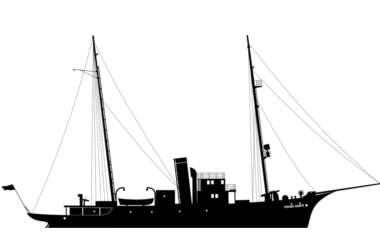 Reliance Defence and Engineering Limited (RDEL) on 25th July launched the first two Naval Offshore Patrol Vessels (NOPVs) at their shipyard in Pipavav, Gujarat. Reliance Defence and Engineering Limited (RDEL) on 25th July launched the first two Naval Offshore Patrol Vessels (NOPVs) at their shipyard in Pipavav, Gujarat.
The ships are part of a five ship project being constructed for the Indian Navy.
The two NOPVs, Shachi and Shruti were launched by Smt. Preeti Luthra at RDEL Shipyard Pipavav, Gujarat.
The primary role of NOPVs is to undertake surveillance of the country’s vast Exclusive Economic Zone (EEZ) besides operational tasks such as anti-piracy patrols, fleet support operations, maritime security of offshore assets, coastal security operations, and protection of shipping lanes.
The NOPVs would increase the ocean surveillance and patrolling capabilities of the Indian Navy.
The NOPVs being constructed at RDEL are patrol ships and are armed with 76mm Super Rapid Gun Mount (SRGM) system along with two 30mm AK-630M guns which provide medium range and short range offensive and defensive capabilities.
The armament is remotely controlled through an electronic Fire Control System. The ships are fitted with diesel engine driven propulsion systems and can deliver speeds upto 25 knots.
All ship operations are controlled by an intelligent Integrated Platform Management System which has interfaces for all operational activities onboard the ship.
These two NOPVs are the first warships to be launched by a private sector shipyard in India. He further noted that opening up of warship building to the private sector by the Indian Navy is an opportunity that the private sector must make full use of, and is an enabling factor for increased private sector participation in this key area of national capability.
While India has commissioned a number of quality warships, our shipyards need to constantly strive to transform with an aim to achieve global standards in quality, productivity and build periods with focus on innovation, modern techniques, and processes, and all round efficiency.
The projects need to be implemented as per planned schedule.
Apart from meeting national requirements, the shipyards should also focus on export orientation.
|
▼ Stapler pins in tea bags banned [07-26-17]
 The Food Safety and Standards Authority of India (FSSAI) has banned the use of stapler pins in tea bags from January 2018. The Food Safety and Standards Authority of India (FSSAI) has banned the use of stapler pins in tea bags from January 2018.
FSSAI ban order issued under Section (15) FSS Act, 2006 has deemed that any loose staple pin consumed inadvertently with tea may cause a serious health hazard.
Currently, tea bags are either stapled or knotted.
According to industry estimates, the tea bag segment contributes 3-4% by value of total tea sales but it is one of the fastest growing segments at 50-60% year-on-year.
The FSSAI order directs the concerned food business operators to discontinue the manufacture, storage, distribution, sale and import of stapled tea bags by 1 January 2018.
It also directs all food safety commissioners to take action to prevent the use of unsafe packaging materials by companies and take up measures for enforcement of its order.
FSSAI: Know More
- FSSAI is a nodal statutory agency responsible for protecting and promoting public health in India through the regulation and supervision of food safety.
- FSSAI was established under the Food Safety and Standards Act, 2006.
- It operates under aegis of Union Ministry of Health & Family Welfare.
|
▼ AAI to develop civil aviation in Uttarakhand [07-25-17]
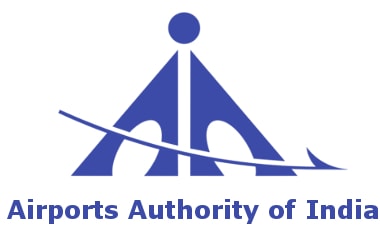 Going ahead with its commitment towards the responsibility of creating, upgrading, maintaining and managing civil aviation infrastructure in the country, Airports Authority of India (AAI) signed an MoU with Government of Uttarakhand last week. Going ahead with its commitment towards the responsibility of creating, upgrading, maintaining and managing civil aviation infrastructure in the country, Airports Authority of India (AAI) signed an MoU with Government of Uttarakhand last week.
AAI joined hands with Uttarakhand Civil Aviation Development Authority (UCADA) to develop the civil aviation sector in the state.
The scope of the MoU is to identify relevant factors influencing the development of civil aviation infrastructure in Uttarakhand, assessing commercial potential of various airports of the state.
It also focuses on identifying technical considerations for airport operations in the state, evaluating site related technical and engineering parameters for development of projects, making estimate of the capital outlay for the future projects and development of master plan for existing and future civil aviation infrastructure in the state.
AAI will also assist UCADA in obtaining necessary clearances for airport operations starting with the upgraded airport at Pithoragarh and later at Chiniyalisaur.
The Government of Uttarakhand is determined to fulfil the long pending requirement of operational airports within the state.
These airports would also be part of the Regional Connectivity Scheme and will boost tourism and air connectivity for the local public.
|
▼ RIWATCH museum to showcase cultural values of NE tribes [07-25-17]
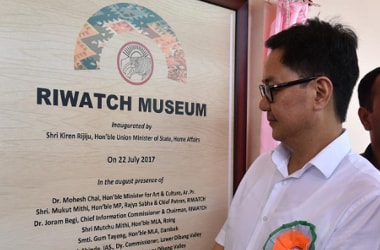 Minister of State for Home Affairs, Kiren Rijiju inaugurated the Research Institution of World Ancient, Traditional, Culture & Heritage (RIWATCH) Museum at Roing on 22nd July 2017. Minister of State for Home Affairs, Kiren Rijiju inaugurated the Research Institution of World Ancient, Traditional, Culture & Heritage (RIWATCH) Museum at Roing on 22nd July 2017.
It is place of exchange of cultural values of various tribes of the state and the North East.
The MoS also pressed for documentation and research to preserve age-old culture and traditions of the state, and exhorted people to shoulder the responsibility to pass on traditional and cultural values to the next generation.
Highlighting the UNESCO report, which states that there are 32 languages in Arunachal Pradesh that are on the verge of extinction, the government is initiating programmes and policies to find out and to revive those minor and major tribes whose languages are on the verge of extinction.
Aims also include showcasing minor tribes in the state, least they become extinct.
The importance and objective of establishment of RIWATCH in the region and called for cooperation in bringing up the museum for preservation of cultural values of various tribes is immeasurable.
|
▼ World’s first hybrid aeroboat completes maiden ride [07-25-17]
 The world’s first hybrid aeroboat was put through its paces on the waters of the Pirogovsky Yacht Club, near Moscow, on 19th July 2017. The world’s first hybrid aeroboat was put through its paces on the waters of the Pirogovsky Yacht Club, near Moscow, on 19th July 2017.
The vessel designed and built by IIAAT Holding, a joint venture between Russia’s International Institute for Advanced Aerospace Technologies and Indian firm Millennium Aerodynamics, with the support of the Skolkovo Foundation, can traverse water, land, ice, sand and swampland.
Five such aeroboats will be used in India for search and rescue operations.
The world’s first hybrid “aeroboat” capable of travelling on land, water, snow and sand that has been built by an Indo-Russian joint venture was thus unveiled in Moscow at a start-ups event organised by Russia’s state-run Skolkovo Foundation.
The aeroboat is designed to access difficult terrain, such as flooded or marshy areas where the use of regular boats is made impossible because of shallow water, patches of dry land or by marine vegetation.
It has been designed by IIAAT Holding, a joint venture between the International Institute for Advanced Aerospace Technologies and Indian firm Millennium Aerodynamics.
The aeroboat is on demonstration in and around a pond in the two-day Startup Village annual event in Moscow for technology entrepreneurs and investors organised by Russia’s biggest innovation fund the Skolkovo Foundation.
These are much faster and more robust than the comparable hovercrafts.
While hovercrafts on average move at around 45-50 km per hour on water, aeroboats are capable of going at around 150 km or more, he said.
The Aeroboat is also more robust than hovercrafts, and with estimated maintenance costs of $400-$600 per year, is cheaper to maintain and fuel.
It runs on a “hybrid” engine, meaning it can run on either petrol or electricity, enabling users to reduce carbon emissions and increase energy efficiency.
The aeroboats will be equipped with IoT (Internet of Things) technology, which allow remotely monitoring and controlling and diagnosing the equipment, as well as the ability to troubleshoot select faults.
According to the makers, with room for 10 passengers and one crew member, the 6.5-metre-long aeroboat can handle steep slopes and embankments, and does not require any marine infrastructure such as jetties, since it is amphibious.
Hovercrafts work on static air-cushion, whereas aeroboats work on dynamic air-cushion. This feature gives aeroboats a huge advantage in terms of speed and manoeuvrability,.
It’s possible to use hovercrafts, but they are very expensive to operate and also have speed limitations.
The amphibious aeroboats can provide high-speed year-round navigation, even when bodies of water are frozen like in Russia.
|
▼ Seeking River Saraswasti, centre-Haryana join hands to revive river [07-24-17]
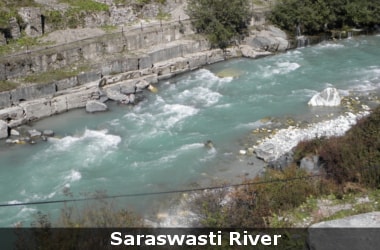 The Centre and the Government of Haryana joined hands on 20th July 2017 to revive the long lost River Saraswati and provide water to the drought-prone areas of India. The Centre and the Government of Haryana joined hands on 20th July 2017 to revive the long lost River Saraswati and provide water to the drought-prone areas of India.
Union Minister of State for Petroleum and Natural Gas (Independent Charge) Dharmendra Pradhan and Haryana Chief Minister Manohar Lal Khattar witnessed the signing of the `Memorandum of Agreement`.
The Haryana Government and ONGC have signed a Memorandum of Agreement for drilling of 10 water wells along the Petro Channel of Saraswati River up to a depth of 400-500 meters, which will aim at providing water in drought-prone areas.
Helping to restore the lost glory of River Saraswati, the MoA will also retain the river`s beauty as well.
The MoA signed today will not just increase the availability of water in the region but will also help in efforts towards rediscovering the lost lineage of Saraswati River.
The ONGC project is an added advantage for the state.
|
▼ IWAI to raise INR 660 crore through bonds [07-21-17]
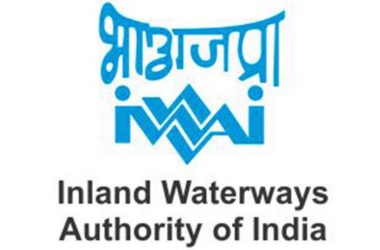 The Union Cabinet gave its nod to Inland Waterways Authority of India (IWAI) to raise Rs.660 crore in bonds for extra budgetary resources (EBRs) in 2017-18. The Union Cabinet gave its nod to Inland Waterways Authority of India (IWAI) to raise Rs.660 crore in bonds for extra budgetary resources (EBRs) in 2017-18.
The proceeds from the bonds will be utilised by IWAI for development and maintenance of National Waterways (NWs) under National Waterways Act, 2016.
Moreover, the funds received will be used exclusively for capital expenditure to improve infrastructure funding.
The principal and interest in respect of the EBRs will be financed by the Union Government by making suitable budgetary provisions in the demand of the Union Ministry of Shipping.
The interest payment on the bonds will be on semi-annual basis and the principal on maturity. The whole exercise would be undertaken by IWAI through appointment of lead managers and coordination with SEBI.
Gross budgetary support from the Union Government and external financial support for funding development and maintenance of 106 new National Waterways under National Waterway Act, 2016, is grossly inadequate.
So far, the World Bank has sanctioned a loan of $ 375 million (around INR 2,421 crore) for Jal Marg Vikas Project (JMVP) along with other sources.
But still there is funding gap which may be bridged by raising bonds.
About Inland Waterways Authority of India (IWAI)
- IWAI is the statutory body in charge of the waterways in India.
- Its headquarters is located in Noida, UP.
- Its main function is to build the necessary infrastructure in the inland waterways, surveying the economic feasibility of new projects and also carrying out administration and regulation.
|
▼ First half of 2017 second hottest year in 137 years: NOAA [07-21-17]
 The first half of this year was the second hottest - just behind 2016 - in 137 years of modern record-keeping on Earth, as per scientists. The first half of this year was the second hottest - just behind 2016 - in 137 years of modern record-keeping on Earth, as per scientists.
The average temperature across global land and ocean surfaces was 0.91 degrees Celsius above the 20th century average of 13.5 degrees Celsius.
This was the second highest value for January-June in the 1880-2017 record, behind the record year of last year.
Last month was the third hottest June, according to the US National Oceanic and Atmospheric Administration (NOAA) global temperature dataset record.
The June temperature across global land and ocean surfaces was 0.82 degrees Celsius above the 20th century average of 15.5 degrees Celsius.
This was the third highest value for June in the 138-year period of record, behind 2016 and 2015.
Last month marks the 41st consecutive June and the 390th consecutive month with temperatures at least nominally above the 20th century average.
The monthly analysis by scientists at NASA’s Goddard Institute for Space Studies (GISS) is assembled from publicly available data acquired by about 6,300 meteorological stations around the world, ship- and buoy-based instruments measuring sea surface temperature, and Antarctic research stations.
The modern global temperature record begins around 1880 because previous observations didn’t cover enough of the planet.
|
▼ Bicentenary celebration of Odisha’s historic Paika Rebellion [07-21-17]
The President of India Shri Pranab Mukherjee inaugurated the “Bicentenary celebration of the heroic Paika Rebellion of Odisha, a valiant uprising of Paikas against the British rule” organised by the Ministry of Culture.
The Bi-Centenary of the Paika Bidroha of Odisha took place 40 years before the revolt of 1857, which was later termed as 1st War of Indian Independence against British Colonialism, a battle was fought under the leadership of Baxi Jagabandhu of Odisha.
Many scholars, researchers and historians have opined that the Paika Rebellion of 1817 was India’s first organized armed rebellion against British Raj.
The legend of the heroics of Buxi Jagabandhu continues to inspire the people of Odisha. It is time, this struggle and sacrifice by a generation of Odia people got its due place in the annals of history.
Paika Rebellion was not only the rebellion of Paikas, it was a National War waged by ordinary people at the grassroots level who resented the dispossession of their Sovereign of his rights and the consequential repressive measures that followed.
Along with Buxi Jagabandu respects were paid to other great warriors of Paika Bidroha who fought side by side.
This includes Dinabandhu Samantray Mohapatra, Dama Subudhi Manjaraj, Samanta Madhaba Chandra Routray (Dalbehera of Tapanga), Pindiki Bahubalendra, Krutibas Patsani and many more heroes of Paika Bidroha.
Paika Rebellion: Know More - Pre-dating what has been popularly regarded as the fist war of independence in 1857, the Paika Bidroha (Paika Rebellion) of 1817 in Odisha briefly shook the foundations of British rule in the eastern part of India.
- Paikas were essentially the peasant militias of the Gajapati rulers of Odisha who rendered military service to the king during times of war while taking up cultivation during times of peace.
- They unfurled the banner of rebellion against the British under the leadership of Baxi Jagandhu Bidyadhara as early as 1817 to throw off the British yoke.
- Rulers of Khurda were traditionally the custodians of Jagannath Temple and ruled as the deputy of Lord Jagannath on earth.
- They symbolised the political and cultural freedom of the people of Odisha. The British, having established their sway over Bengal Province and Madras Province to the north and south of Odisha, occupied it in 1803.
- The Gajapati King of Odisha Mukunda Deva-ll was a minor then and initial resistance by JaiRajguru, the custodian of Mukunda Deva-II, was put down brutally and Jai Rajguru was torn apart alive.
- A few years later, it was the Paikas under Baxi Jagabandhu, the hereditary chief of the militia army of the Gajapati King, who rose in rebellion, taking support of tribals and other sections of society.
- The rebellion started in March 1817 and spread quickly.
- Though Paikas played a larger role in the rebellion against the British, it was by nomeans a rebellion by a small group of people belonging to a particular class.
- The tribals of Ghumusar (part of present day Ganjam and Kandhmal Districts) and other sections of the population actively took part in it.
- In fact, the Paika Bidroha got the opportune moment to spread when 400 tribals of Ghumsar entered Khurda protesting against the British rule.
- The Paikas attacked British symbols of power, setting ablaze police stations, administrative offices and the treasury during their march towards Khurda, from where the British fled.
- The Paikas were supported by the rajas of Kanika, Kujang, Nayagarh and Ghumusar and zamindars, village heads and ordinary peasants.
- The rebellion quickly spread to Purl, Pipli Cuttack and other parts of the province.
- Though the Paika Bidroha enjoys a cult status in Odisha with children growing up with stories of the brave fight against the British, it has unfortunately received less attention at the national level than it should have got.
- The solar flare makes it quite improbable for Proxima Centauri b to host a life form as we know it.
|
▼ MCI loses teeth, SC constitutes panel [07-20-17]
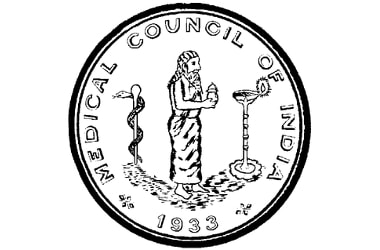 Supreme Court has allowed the Union Government to replace the oversight committee set up to supervise the functioning of the Medical Council of India (MCI) with a fresh panel of five eminent doctors. Supreme Court has allowed the Union Government to replace the oversight committee set up to supervise the functioning of the Medical Council of India (MCI) with a fresh panel of five eminent doctors.
The Supreme Court also gave the Government liberty to replace any doctor in the list with another if he does not wish to be a part of the oversight committee.
Earlier, Government had proposed the names of five eminent doctors to replace the earlier members of the oversight committee whose term had just expired.
The Supreme Court using its rare and extraordinary powers under the Article 142 of the Constitution had set up the oversight committee court in May 2016 to oversee the MCI’s functioning for a period of one year or till a suitable mechanism was brought in by the Government to substitute it.
The committee was led by former Chief Justice of India R.M. Lodha.
MCI is a statutory body for establishing uniform and high standards of medical education in India.
It grants recognition of medical qualifications, gives accreditation to medical schools, grants registration to medical practitioners, and monitors medical practice in India
|
▼ Now, ride flying taxis in Sao Paolo! [07-20-17]
 While Uber has changed ground transport in many cities, Sao Paulo’s infernal traffic jams have sparked a new app that opens the sky to commuters. While Uber has changed ground transport in many cities, Sao Paulo’s infernal traffic jams have sparked a new app that opens the sky to commuters.
Voom is a helicopter taxi service that charges according to distance and the passenger’s weight.
It’s a godsend for those in a rush - but only if the weather permits.
Sao Paulo - South America’s biggest city, home to 12 million residents within its municipal limits and millions more in satellite towns - is regularly choked by gargantuan traffic jams.
There are 5.9 million vehicles, or one for every two people. At peak hour, traffic can be backed up as much as 576 km
A new venture launched in April by Europe’s Airbus, Voom has taken a page out of Uber’s marketing manual to put clients above it all - at a competitive price.
The app asks passengers to enter their weight and that of any baggage, then immediately sends the calculated fare.
Using a traditional taxi on the clogged roads would have cost travellers $50 and an hour and a half of frustrating stop-and-go. Choosing the chopper taxi is no-brainer!
|
▼ Hizbut Tahrir seeks global caliphate, banned by Indonesia [07-20-17]
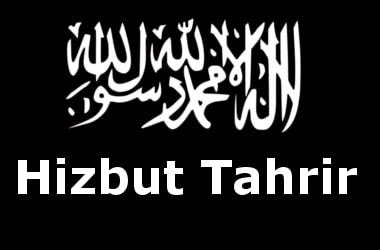 The Indonesian government on July 19, 2017 banned Hizbut Tahrir, an organisation that wants to establish a global caliphate. The Indonesian government on July 19, 2017 banned Hizbut Tahrir, an organisation that wants to establish a global caliphate.
This is under a new presidential decree criticised as draconian by rights groups.
The decree signed last week by President Joko “Jokowi” Widodo gives the government almost unfettered power to ban organisations deemed against the constitution and the official state ideology Pancasila.
Rights group say governments could easily abuse the decree’s power.
The measures follow months of sectarian tensions that shook the government and undermined Indonesia’s reputation for practicing a moderate form of Islam.
|
▼ Matunga station gets first all woman crew, breaks records [07-18-17]
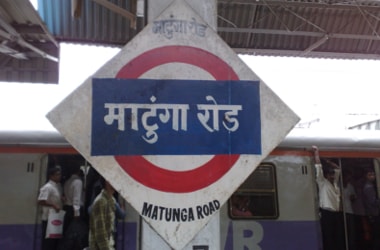 The Indian Railways have taken a major step towards the empowerment of women by handing over a station to an all women crew for the first time in the history of Indian Railways. The Indian Railways have taken a major step towards the empowerment of women by handing over a station to an all women crew for the first time in the history of Indian Railways.
Matunga, located in the heart of Mumbai city, on Central Railway now have an all women crew which includes ticketing staff, security staff and other personnel required to operate the station.
The station master too is a woman.
Ms Kulkarni, holds the credit of becoming first woman station master in Mumbai division when she joined Central Railway in 1992.
Even women ticket checkers deployed at Matunga station have learnt how to deal with male passengers.
A total of 30 women staffers, including 11 booking clerks, five RPF personnel, seven ticket checkers are working under the supervision of station manager Mamta Kulkarni since last two weeks.
DK Sharma, general manager of Central Railway, who floated the idea of all ladies station, indicated this was a tool for empowering women.
Matunga is an important railway station on Central Railway suburban network located between Dadar and Sion and many railway passengers use the station.
This is including several railway employees who work at the railway workshop situated adjacent to the station.
|
▼ MSDE celebrates second anniversary of Skill India Mission [07-17-17]
 Ministry of Skill Development and Entrepreneurship (MSDE) here today celebrated the second anniversary of Skill India Mission on the World Youth Skills day. Ministry of Skill Development and Entrepreneurship (MSDE) here today celebrated the second anniversary of Skill India Mission on the World Youth Skills day.
100 GST training centres, 51 Pradhan Mantri Kaushal Kendras and 100 Yoga training centres were inaugurated on the occasion.
SKILL INDIA
This Mission is the brainchild of Prime Minister of India, Shri Narendra Modi.
It was during his presence, MSDE had launched the SKILL INDIA Campaign on the occasion of the first ever World Youth Skills Day on 15th July 2015.
Skill India is a hallmark mission for us and it has been a great two-year journey of Skill India. India has always been an artisan-based economy for the last 5000 years that sustained livelihoods.
The event saw prominent Industry captains and key representatives of companies participate and more than 32000 companies pledged support to apprenticeship training for Skill India Mission under the National Apprenticeship Promotion Scheme (NAPS).
MSDE also announced the launched of National Apprenticeship Promotion Scheme (NAPS) in BFSI Sector and along with candidates receiving their apprenticeship letters at the gathering.
On the occasion, Ministry of Skill Development and Entrepreneurship (MSDE) announced a national training Programme to certify GST practitioners under its flagship scheme of Pradhan Mantri Kaushal Vikas Yojana (PMKVY).
This would facilitate the country’s transition to the new tax regime seamless and convenient.
Total 100 GST training centres across the nation were launched along with the training curriculum.
In line with the commitment of opening one Pradhan Mantri Kaushal Kendra (PMKK) in each district, additional 51 PMKK were announced across India counting to 200 in total till date.
Staying true to Shri Narendra Modi’s commitment to promote yoga, MSDE also launched 100 yoga training centres on the occasion.
The event also witnessed the distribution of certificates for short-term/ Recognition of Prior Learning (RPL) certificates to candidates trained under Pradhan Mantri Kaushal Vikas Yojana (PMKVY).
MSDE also launched Takshashila - a portal for trainers and assessors that would rack their training life-cycle and would function as the central repository of information concerning the development of their quality benchmarks in the Indian skill eco-system Minister for Rural Development, Panchayati Raj,
MoRD is mandated to build 1 crore houses by 2019. This would not be possible without an efficient and skilled workforce.
The Skills Ministry has revolutionized the rural sector and their commendable efforts are visible. The rural workforce is being trained across villages with the support of the skill training machinery.”
Skill India is a national movement bringing together multiple stakeholders on a common platform to maximise the potential of India’s youth.
This day is to celebrate the unified efforts and the convergence in skill training efforts to achieve quality and scale in our ecosystem.
|
▼ Union Government gives army special powers for intense, short battles [07-14-17]
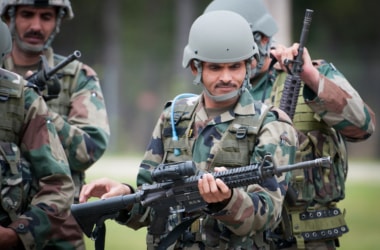 The Union Government has empowered the Army to directly procure critical weapons systems and military platforms to maintain combat readiness for short duration intense wars. The Union Government has empowered the Army to directly procure critical weapons systems and military platforms to maintain combat readiness for short duration intense wars.
The purpose of this new scheme is to maintain an optimum level to fight short intense wars following critical voids in capabilities of Army.
The Army faces severe shortage in ammunition, mainly for artillery guns, air defence, tanks and certain infantry weapons.
This shortage may make it very difficult for Army to fight a short intense war that lasts for 10 to 15 days.
To overcome this issue, Army was pressing the government for ensuring speedy procurement of key military platforms citing evolving security challenges.
Under the new scheme, Vice Chief of Army has been given the full financial powers to procure ammunitions.
Army has been empowered on a routine basis to review the optimum holding state and maintaining it on a recurring manner.
The new procedure will be part of revenue procurement of the Army for in-service equipment and weapons.
As part of it, the Army has been allowed to procure 46 types of ammunition and spares for 10 different types of weapons systems.
The new revenue route for procurement of in-service equipment will not require going through numerous procurement stages which often cause inordinate delays.
Earlier it was necessary to take permission from Defence Acquisition Council (headed by defence minister) or the Cabinet Committee on Security (headed by Prime Minister), for procuring such critical equipment. Thus, new scheme will ensure that the time taken in procuring such equipment is reduced.
|
▼ Cost effective forecast system on the anvil for Godavari [07-14-17]
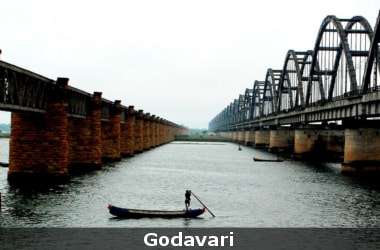 A group of US researchers is working on a system to map undulating pollution trends in the Godavari, India’s second longest river. A group of US researchers is working on a system to map undulating pollution trends in the Godavari, India’s second longest river.
Using a mix of methods, including satellite-monitoring, traversing stretches of the river to collect water samples.
Using special sensors to measure bacterial and chemical pollution, the researchers are trying to develop a cost-effective forecast system.
The team’s long-term objective is to be able to inform State officials and citizens of a probable spike in, say, levels of dangerous microbes or effluents, similar to weather and air pollution forecasts.
The am is to be able to access “raw data” that could be used to inform the efficacy of a proposed faecal sludge treatment plant.
It will also indicate if behavioural interventions — including incentives or punishments — to restrict activities that pollute the river could actually work.
The project started eight months ago and has so far identified two “hotspots” of pollution,.
The exercise being done along a portion of the 1,400-km river spanning Rajamundhry (East Godavari district) and Kovvur, Narsapur and Palakol (all in West Godavari), measures parameters such as total dissolved salts, nitrate, pH, temperature, turbidity and electrical conductivity.
These are relayed to a website called Thoreau, a wireless sensing network maintained at the University of Chicago to map environmental parameters, for analysis.
Some river attributes such as microbial levels require to be measured in laboratories, though the team hopes eventually to be able to use low-cost sensors that measure them, too, in real time.
The exercise is part of a Bill and Melinda Gates Foundation project to support the programme of the Administrative Staff College of India (ASCI).
It aims to provide city-wide sanitation improvements in urban Andhra Pradesh.
Sensors to monitor river pollution are an emerging technological approach in India.
40 proposals to make the sensors (to monitor river and environmental pollution) had come in, and two would be short-listed soon.
Intel, which will make the chips powering the devices, and the DST will split a INR 35-crore investment.
|
▼ Iraq declares victory over IS in Mosul [07-12-17]
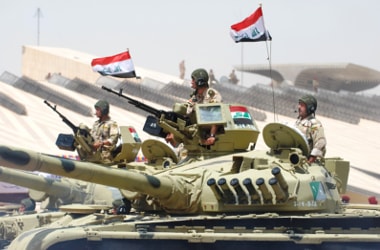 Haider al-Abadi, Prime Minister of Iraq, on 8 July 2017 declared the full liberation of Mosul and reclaim the city after three years of ISIL control. Haider al-Abadi, Prime Minister of Iraq, on 8 July 2017 declared the full liberation of Mosul and reclaim the city after three years of ISIL control.
The success was achieved after nine months of bitter fighting to displace the extremist group from the city where it proclaimed its caliphate.
Abadi travelled to Islamic State to formally reclaim the devastated city.
Mosul is a major city in northern Iraq.
The city stands on the west bank of the Tigris, opposite the ancient Assyrian city of Nineveh on the east bank.
It had been under the control of the Islamic State of Iraq and the Levant since June 2014.
Since October 2016, the city has been a site of a military operation to dislodge and defeat militant forces.
The Battle of Mosul, a military offensive to retake the city begun in October 2016, is the largest deployment of Iraqi forces since the 2003 invasion by US and coalition forces.
Battle of Mosul: Know More
- Battle of Mosul, dubbed as “We Are Coming, Nineveh” began on 16 October 2016.
- It commenced with forces besieging ISIL-controlled areas in the Nineveh Governorate surrounding Mosul.
- The battle was the world’s single largest military operation in nearly 15 years.
- On 1 November 2016, Iraqi Special Operations Forces entered the city from the east.
- The advance into the city was slowed by elaborate defenses and by the presence of civilians.
- However, the Iraqi Prime Minister declared “full liberation of eastern side of Mosul” on 24 January 2017.
- On 19 February 2017, Iraqi troops began their offensive to recapture western Mosul.
- On 1 March 2017, it was announced that the Iraqi Army had taken control of the last major road to western Mosul.
- On 9 March 2017, Iraqi forces reached the Grand Mosque of al-Nuri from where al-Baghdadi had made a declaration of a “caliphate”.
- On 3-4 May 2017, Iraqi forces fought to recapture the Old City area, tightening their control around the al-Nuri Mosque.
|
▼ New sites to make it to UNESCO’s world heritage list! [07-12-17]
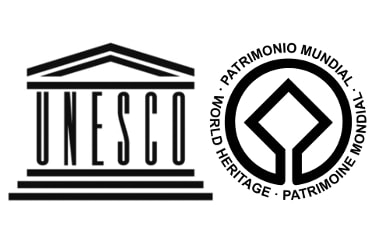 The World Heritage Committee, during its 41st session in Krakow from 2 July to 12 July 2017, added various cultural and natural sites in UNESCO’s World Heritage List. The World Heritage Committee, during its 41st session in Krakow from 2 July to 12 July 2017, added various cultural and natural sites in UNESCO’s World Heritage List.
The 41st session of the World Heritage Committee was chaired by Jacek Purchla, Founder and Director of the International Cultural Centre in Krakow.
The City of Yazd is located in the middle of the Iranian plateau, close to the Spice and Silk Roads.
It bears living testimony to the use of limited resources for survival in the desert.
Water is supplied to the city through a qanat system developed to draw underground water.
1. Sacred Island of Okinoshima and Associated Sites in the Munakata (Japan):
Located 60 km off the western coast of Kyushu, the island of Okinoshima bans women and mandates male visitors to strip naked before going ashore.
This men only island encompasses some archaeological sites that have been preserved on the Island and are virtually intact and provide a chronological record of how the rituals performed there changed from the 4th to the 9th centuries CE.
Venetian Works of Defence between the 16th and 17th Centuries (Croatia, Italy, Montenegro): This site contains 15 components of defence works in Italy, Croatia and Montenegro.
It spans more than 1000 kilometres between the Lombard region of Italy and the eastern Adriatic Coast.
2. Kujataa Greenland (Denmark):
Kujataa is a sub-arctic farming landscape located in the southern region of Greenland.
It bears witness to the cultural histories of the Norse hunters-gatherers, Norse farmers, Inuit hunters and Inuit farming communities.
The landscape represents the earliest introduction of farming to the Arctic, and the Norse expansion of settlement beyond Europe.
Taputapuatea (France): Taputapuatea on Raiatea Island of France is at the centre of the Polynesian Triangle, a vast portion of the Pacific Ocean dotted with islands.
It is the last part of the globe to be settled by humans.
3. Caves and Ice Age Art in the Swabian Jura (Germany):
Modern humans first arrived in Europe around 43000 years ago during the last ice age.
One of the areas where they took up residence was the Swabian Jura in southern Germany. Excavated from the 1860s, six caves have revealed items dating from 43000 to 33000 years ago.
Among them are carved figurines of animals, musical instruments and items of personal adornment.
Tarnowskie Gory Lead-Silver-Zinc Mine (Poland): Located in Upper Silesia in southern Poland, the site includes the entire underground mine with adits, shafts, galleries and water management system.
Mostly, the site is situated underground while the surface mining topography features the remains of the 19th century steam water pumping station.
4. Aphrodisias (Turkey):
Located in southwestern Turkey, the site consists of two components: the archaeological site of Aphrodisias and the marble quarries northeast of the city.
The temple of Aphrodite dates from the 3rd century BCE and the city was built one century later.
5. Kulangsu:
A historic international settlement (China): Kulangsu is a tiny island located nearby the Chiu-lung River and faces the Chinese city of Xiamen.
There is a mixture of different architectural styles including Traditional Southern Fujian Style, Western Classical Revival Style and Veranda Colonial Style.
The most exceptional evidence of the fusion of various stylistic influences is a new architectural movement, the Amoy Deco Style, which is an amalgamation of the Modernist style of the early 20th century and Art Deco.
Mbanza Kongo (Angola): The town of Mbanza Kongo was the political and spiritual capital of the Kingdom of Kongo.
The historical area grew around the royal residence, the customary court and the holy tree, as well as the royal funeral places.
Mbanza Kongo illustrates the profound changes caused by the introduction of Christianity and the arrival of the Portuguese into Central Africa.
6. Asmara: a Modernist City of Africa (Eritrea):
Located at over 2000 metres above sea level, Asmara developed as a military outpost for the Italian colonial power from 1890s onwards.
Today, Asmara is an exceptional example of early modernist urbanism at the beginning of the 20th century and its application in an African context.
7. Khomani Cultural Landscape (South Africa):
Khomani Cultural Landscape is located at the border with Botswana and Namibia in the northern part of South Africa.
It bears testimony to the way of life that prevailed in the region and shaped the site over thousands of years.
8. Qinghai Hoh Xil (China):
Qinghai Hoh Xil is the largest and highest plateau in the world. This extensive area of alpine mountains and steppe systems is situated more than 4500 m above sea level.
The property shelters the complete migratory route of the Tibetan antelope, one of the endangered mammals that are endemic to the plateau.
9. Landscapes Of Dauria (Mongolia / Russian Federation):
Shared between Mongolia and the Russian Federation, this site is an outstanding example of the Daurian Steppe eco-region, which extends from eastern Mongolia into Russian Siberia and north-eastern China.
10. Los Alerces National Park (Argentina):
The Los Alerces National park is located in the Andes of northern Patagonia and has a western boundary, which coincide with the Chilean border.
The site is important for the protection of some of the last pieces of Patagonian Forest in an almost unspoiled state and is the habitat for a number of threatened species of flora and fauna.
|
▼ ISRN, IICA release joint publication on CSR [07-12-17]
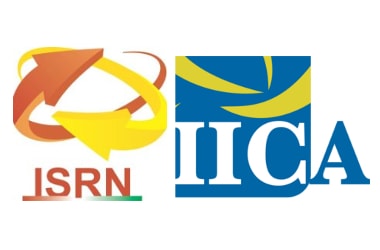 Compendium of CSR: Best Practices in India was launched at 12th July, 2017 at Indian Institute of Corporate Affairs (IICA) Campus at Manesar, District. Gurgaon, Haryana. Compendium of CSR: Best Practices in India was launched at 12th July, 2017 at Indian Institute of Corporate Affairs (IICA) Campus at Manesar, District. Gurgaon, Haryana.
Indian Social Responsibility Network (ISRN), a forum for Corporate Social Responsibility (CSR) and Indian Institute of Corporate Affairs (IICA) are jointly organizing the Release of Compendium of CSR: Best Practices in India.
The aim is to highlight and motivate the best CSR practices of Corporate contributed under CSR projects towards nation building efforts for sustainable development.
ISRN and IICA will also sign MoU to carry forward joint initiatives in the area of CSR.
The Compendium of CSR: Best Practices in India is a rich collection of selected stimulating documentation capturing the best practices in the field of CSR in India.
Apart from benefiting the Corporate/PSUs and the NGOs, the Publication will enhance the visibility of CSR work that is being undertaken as a CSR mandate of companies/PSUs, and improve their social image.
The Document will also help Voluntary Organisations and Corporate Entities to work effectively and ensure proper utilization CSR Funds.
The compilation of the Compendium is based on the philosophy of ISRN Relationship Building, Beyond Funding.
|
▼ Making work safer: MoU for prevention of occupational health issues! [07-12-17]
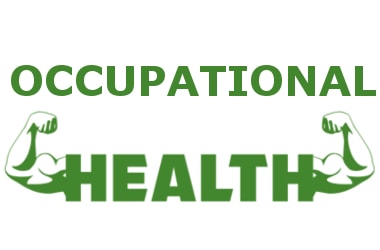 MoU between ESIC and Directorate General Factory Advice Service & Labour Institutes (DGFASLI) was signed for collaboration in the field of occupational health and prevention of occupational injuries and diseases. MoU between ESIC and Directorate General Factory Advice Service & Labour Institutes (DGFASLI) was signed for collaboration in the field of occupational health and prevention of occupational injuries and diseases.
Ministry is committed to providing social security for the workers across the country.
The MoU will help in spreading awareness for healthy working conditions, reduce the danger of diseases or injuries and provide good quality life for workers.
The MoU seeks to establish a mutual collaboration that will enhance Occupational Health of workers; reduce the occurrence of work related injuries and diseases.
Special focus shall be paid to precarious working conditions in the formal and informal sectors. The main focus is occupational health by establishing ‘DGFASLI-ESIC Occupational Health Training, Research & Development Centre’ (OHTRDC) at Regional Labour Institute, Faridabad.
This will be followed by at other institutes located at Mumbai, Chennai, Kolkata and Kanpur.
The collaboration aims at improving the quality of life through joint scientific research following other activities:-
a. Assessment of OSH challenges in all the spheres of economic activity.
b. Special activities for prevention and control of Asbestosis, Silicosis and other occupational diseases.
c. Development of training modules for different target groups.
|
▼ Britain's first transgender man to give birth: Hyden Cross [07-11-17]
 Britain’s first pregnant man has given birth to a baby girl! Britain’s first pregnant man has given birth to a baby girl!
Hyden Cross, 21, made headlines around the world earlier in 2017 when he announced that he was pregnant by a sperm donor.
Three years ago, Cross had legally become male through gender assignment.
He, however, put his transition on hold to have a child.
Reports suggest that his daughter, Trinity-Leigh, was born on 16 June 2017 by caesarian at Gloucestershire Royal Hospital.
With her birth, Cross became the first transgender man to give birth in the United Kingdom.
After the birth of the child, Cross plans to return to complete his gender realignment as soon as possible.
Under the gender reassignment, he will have to under the process of removal of his breasts and ovaries.
This reassignment will help him to transform himself into a man from a woman.
The first man to give birth was Thomas Beatie in the US in 2008.
Born a woman, he had a partial sex change but kept his womb and was able to conceive.
Earlier Cross applied to have his eggs frozen in the UK’s state-funded National Health Service (NHS) with a hope that he would be able to have children in future.
But after being refused, he was able to find an anonymous donor through a Facebook
|
▼ Volango Wharf Archaeological makes it to World Heritage List [07-11-17]
 The World Heritage Committee of UNESCO on 9 July 2017 added Valongo Wharf Archaeological Site in the World Heritage List. The World Heritage Committee of UNESCO on 9 July 2017 added Valongo Wharf Archaeological Site in the World Heritage List.
The committee, during its meeting in Krakow, Poland, stated that Valongo is the most important physical trace of the arrival of African slaves on the American continent.
Valongo Wharf Archaeological Site is located in central Rio de Janeiro, Brazil and encompasses the whole of Jornal do Comercio Square.
The place where the site stands is the former harbour area of Rio de Janeiro where the old stone wharf was built for enslaved Africans who arrived in South America through Valongo from 1811 onwards.
An estimated 900000 Africans arrived at that time.
Valongo was the place where the slaves, often sick after the voyage, were taken to be quarantined, sorted and sold.
The site possesses several archaeological layers, the lowest of which consists of floor paving in pe de moleque style, attributed to the original Valongo Wharf.
The Valongo Wharf Archaeological Site received support from the International Scientific Committee of UNESCO’s 2013 Project for its inclusion in the World Heritage List as it reiterates the history of slavery and its legacy in the Americas.
Presently, the Valongo site is not on the water, but on inland after the expansion of the original city.
The remains of the African slaves were discovered by accident in 2011 during the urban renovation of the central area of the city of Rio de Janeiro.
After few archaeological diggings, it was found that the Valongo complex included the Wharf, a group of warehouses used for quarantining, displaying and selling the Africans.
|
▼ India free from H5N1 and H5N8 [07-7-17]
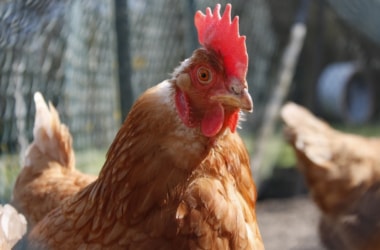 India had reported outbreaks of Highly Pathogenic Avian influenza at various epicentres in Delhi, Gwalior (MP), Rajpura (Punjab), Hissar (Haryana), Bellary (Karnataka), Allappuzha and Kottayam (Kerala), Ahmedabad (Gujarat), Daman (Daman) and Khordha and Angul (Odisha). India had reported outbreaks of Highly Pathogenic Avian influenza at various epicentres in Delhi, Gwalior (MP), Rajpura (Punjab), Hissar (Haryana), Bellary (Karnataka), Allappuzha and Kottayam (Kerala), Ahmedabad (Gujarat), Daman (Daman) and Khordha and Angul (Odisha).
This was during October, 2016 to February, 2017.
All the outbreaks of Avian Influenza (HPAI) mentioned above were notified to OIE and the control and containment operations were carried out as per the Action Plan on Preparedness, Control and Containment of Avian Influenza.
Surveillance was carried out throughout the country and around the areas of the outbreaks since completion of the operation (including culling, disinfection and clean-up).
Surveillance in the states showed no evidence of presence of Avian Influenza Virus.
In view of the above, India has declared itself free from Avian Influenza (H5N8 and H5N1) from 6th June, 2017 and notified the same to OIE.
Avian Influenza: Know More
- Types: Avian A/H5N1 subtype, Canine Equine Swine, A/H1N1 subtype
- Vaccines: 2009 pandemic Pandemrix, Fluzone, Influvac Live attenuated Optaflu
- Treatment: Amantadine, Laninamivir, Oseltamivir, Peramivir, Rimantadine, Umifenovir, Vitamin D Zanamivir
- Pandemics: 2009 swine 1968–1969, Hong Kong 1957, Asian flu 1918
- Outbreaks: 2015 United States, H5N2 outbreak 2014 Kerala, 2008 West Bengal, 2007 Bernard Matthews H5N1, 2007 Australian equine, 2006 H5N1 India, 1976 swine flu.
|
▼ Carrie Lam Cheng is HKSAR's first female Chief Executive [07-4-17]
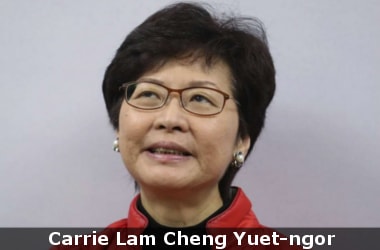 Carrie Lam Cheng Yuet-ngor was on 1 July 2017 sworn in as the Chief Executive of the Hong Kong Special Administrative Region (HKSAR). Carrie Lam Cheng Yuet-ngor was on 1 July 2017 sworn in as the Chief Executive of the Hong Kong Special Administrative Region (HKSAR).
Lam took her oath before President Xi Jinping, who oversaw the swearing-in ceremony.
With this, Lam became Hong Kong’s fifth Chief Executive since 1997.
She is also the first female to hold the post.
Lam and her Cabinet swore to serve China and Hong Kong and to uphold the Basic Law, the territory’s mini-constitution.
The Members of the Executive Council of the HKSAR were sworn in by Lam thereafter.
As a Chief Executive of Hong Kong, Lam is expected to unify the Chinese-ruled city.
This is even as public resentment swells at Beijing’s growing interference in its affairs despite being promised a high degree of autonomy.
She also has to reinvigorate the economy and address growing social inequalities and high property prices.
Lam was once the most popular official in the cabinet of former Chief Executive Leung Chun-ying, who in 2012 won a similar election restricted to just 1200 voters.
A devout Catholic and a student of sociology at the University of Hong Kong, Lam took part in social activism before joining the government.
|
▼ Record 65 MOUs signed during Textiles India 2017 [07-4-17]
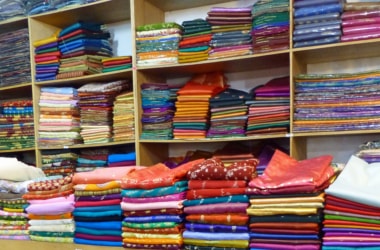 A record 65 Memorandum of Understandings (MoUs)/agreements was signed on the second day of the Textiles India 2017 in Gandhinagar, Gujarat on 1 July 2017. A record 65 Memorandum of Understandings (MoUs)/agreements was signed on the second day of the Textiles India 2017 in Gandhinagar, Gujarat on 1 July 2017.
Of these 65 MoUs, 62 were signed by the Union textiles ministry and remaining three MoUs were signed by Gujarat government on textile sector.
The Textile Ministry includes MoUs with China, and Bangladesh for silk research, fashion technologies and knowledge transfer.
MoUs were signed between various domestic and international organisations, both private and government-owned.
Three government-to-government (G2G) MoUs were signed as well.
These were signed between the central silk board and department of agriculture of the Gyangxi Zhuang Autonomous Region, China.
They were for the development of improved silkworm breeds and mulberry varieties with the exchange of sericulture genetic materials.
Another MoU was signed between the ministry of textiles and the department of foreign affairs and trade – Australia for textiles and fashion projects.
The third was signed between the National Institute of Fashion Technology and the Bangladesh University of Fashion and Technology to encourage academic cooperation between the two institutes and strengthen academic interventions.
|
▼ Mahesh M. Bhagat is third IPS officer to win US anti-trafficking award [07-4-17]
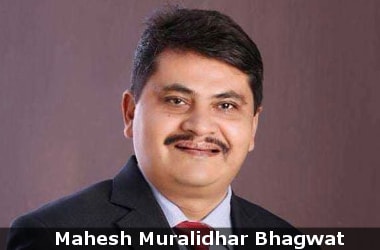 Mahesh Muralidhar Bhagwat, IPS officer from Telangana was conferred with the 2017 Trafficking in Persons (TIP) Report Heroes Award. Mahesh Muralidhar Bhagwat, IPS officer from Telangana was conferred with the 2017 Trafficking in Persons (TIP) Report Heroes Award.
This award is given by the Unites States Department of State.
He is third IPS officer to get this honour.
He was awarded for his vital role in elevating human trafficking as a government priority and his innovative approach to investigating cases and dismantling human trafficking operations.
Currently, Mahesh Bhagwat is Police Commissioner of Rachakonda, one of the three Police Commissionerates located in Hyderabad.
Rachakonda Police Commissionerate had closed 25 brothels – 20 residential apartments and five hotels- in less than a year.
The Commissionerate also had participated in one of the largest crackdowns on labour trafficking in the country, which had led to the identification and rescue of more than 350 children bonded forcibly to work in brick kilns
Each year, the US Department of State honours individuals around the world who have devoted their lives to the fight against human trafficking, including lawmakers and police officers.
|
▼ Boy beats Einstein, Hawking on Mensa test [07-3-17]
 Arnav Sharma, an 11-year-old Indian-origin boy in the United Kingdom, secured the top possible score of 162 on a Mensa IQ test. Arnav Sharma, an 11-year-old Indian-origin boy in the United Kingdom, secured the top possible score of 162 on a Mensa IQ test.
Sharma secured two points higher than physicist Albert Einstein and astrophysicist Stephen Hawking, making him one of the brainiest children in the country.
The Indian-origin boy passed the infamously difficult test a few weeks back with zero preparation. In fact, he had never seen what a typical paper looked like before taking it.
Sharma’s score in the exam, which primarily measures verbal reasoning ability, puts him in the top one per cent of the nation in terms of IQ level.
Sharma currently attends Crossfields School on the outskirts of Reading town in southern England, has been selected for Eton College and Westminster, both highly competitive and sought-after schools, with no preparation.
Mensa: Know More
- Mensa is believed to be the largest and oldest high IQ society in the world.
- Its membership is open to anyone who can demonstrate an IQ in the top 2 per cent of the population, measured by a recognised or approved IQ testing process.
- The society was founded in 1946 in Oxford by Lancelot Lionel Ware, a scientist and lawyer, and Roland Berrill, an Australian barrister.
|
▼ NSSO’s report on non-agricultural enterprises [07-3-17]
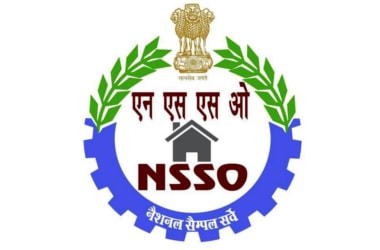 The National Sample Survey Office (NSSO) under Union Ministry of Statistics and Programme Implementation on 29 June 2017 released the report titled ‘Key Indicators of Unincorporated Non-Agricultural Enterprises (Excluding Construction) in India’. The National Sample Survey Office (NSSO) under Union Ministry of Statistics and Programme Implementation on 29 June 2017 released the report titled ‘Key Indicators of Unincorporated Non-Agricultural Enterprises (Excluding Construction) in India’.
The Report was released based on the information collected under 73rd round of its survey conducted during July 2015 to June 2016 as a follow-up survey of the 6th Economic Census.
The survey was designed to generate various estimates on the operational and economic characteristics of the unincorporated non-agricultural enterprises in industry sectors of manufacturing, trading and other services such as type of enterprises, employment particulars, operating expenses, etc.
The survey covered non-agricultural enterprises which are not incorporated or not registered under Companies Act, 1956.
The categories of enterprises under the coverage of survey included proprietary and partnership enterprises (excluding limited liability partnerships), Self Help Groups (SHGs), Non-Profit Institutions (NPIs) and Trusts etc.
The domain of ‘unincorporated enterprises’ excluded bidi and cigar manufacturing enterprises registered under Bidi and Cigar Workers (Condition of Employment) Act, 1966; government sector enterprises and cooperatives.
The results of the survey are based on the sample canvassed by NSSO consisting of 8484 villages and 7839 urban blocks spread over all States and Union Territories of the country.
The total number of enterprises in which the Schedule was canvassed was 143179 and 146934 in rural and urban India respectively during the period July 2015 –June 2016.
Non Agricultural Enterprises in India
- During 2015-16, 6.34 crore unincorporated non-agricultural enterprises (excluding construction) were estimated at all India level.
- Out of the total estimated number of enterprises at all India level, 31 per cent were engaged in manufacturing, 36.3 per cent were in trading and 32.6 per cent were in other services sector.
- Out of the total number of unincorporated non-agricultural enterprises, about 51 per cent were located in rural areas and 49 per cent were located in urban areas.
- Own Account Enterprises (OAEs) have a dominant share of 84.2 per cent in the unincorporated non-agricultural enterprises under survey coverage.
- Uttar Pradesh reported the highest share of 14.20 per cent in total number of unincorporated non-agricultural enterprises followed by West Bengal (13.99 per cent), Tamil Nadu (7.80 per cent), Maharashtra (7.54 per cent) and Karnataka (6.05 per cent)
|
▼ 10 railway stations to be redeveloped on global standards! [07-3-17]
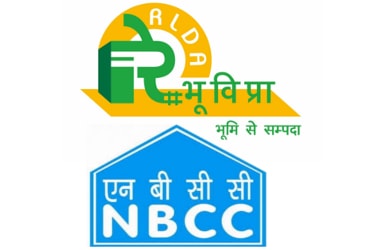 Rail Land Development Authority (RLDA) has inked MoU with National Building Construction Corporation (NBCC) for redevelopment of 10 railway stations across the country on global standards. Rail Land Development Authority (RLDA) has inked MoU with National Building Construction Corporation (NBCC) for redevelopment of 10 railway stations across the country on global standards.
The identified stations to be taken up initially by NBCC, a PSU of Urban Development Ministry for redevelopment are Tirupati, Nellore, Puducherry, Sarai Rohilla (Delhi), Madgaon, Lucknow, Gomtinagar, Kota, Thane (New) and Ernakulam.
RLDA is an arm of the Indian Railways for commercial exploitation of rail land.
As per the MoU, a Special Purpose Vehicle (SPV) will be formed at the national level as a Joint Venture (JV) company between RLDA and NBCC on 50:50 shareholding basis.
The SPV in turn will enter into City Support Agreements (CSA) with respective cities for the redevelopment of stations and commercial development on Railway land in alignment with the Smart City Plans of respective cities. RLDA will lease out the land to the SPV for a fixed lease period of up to 45 years at a nominal token cost for development and NBCC as Project Management Consultant will execute the project work on behalf of SPV.
Earnings from the commercial development of land parcels at stations will be utilized to redevelop the stations for creating necessary infrastructure and better passenger amenities.
The surplus earnings will go to RLDA which would in turn would be remitted to Zonal railways.
The entire revenue from lease revenues from built up spaces will be deposited in an SPV’s ESCROW account which is to be managed by a Committee to be formed.
Know More About Indian Railways: World's Largest PSU employer
- The Indian Railways has embarked on an ambitious project to redevelop 403 stations with the participation of private players, public sector and foreign agencies.
- It has taken up this redevelopment programme of stations in a big way by adopting a multi-pronged strategy.
- It has chosen PPP model and is also roping in varied agencies to execute the project namely its own PSUs, other Central government PSUs, foreign countries through government-to-government (G2G) cooperation and state governments.
- Earlier in October 2016, MoU was also signed between the Railway Ministry and Urban Development Ministry for integrated planning for redevelopment of railway stations in the cities included in the Smart Cities Mission and AMRUT schemes.
|